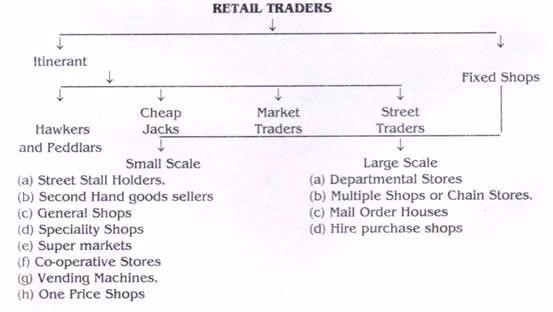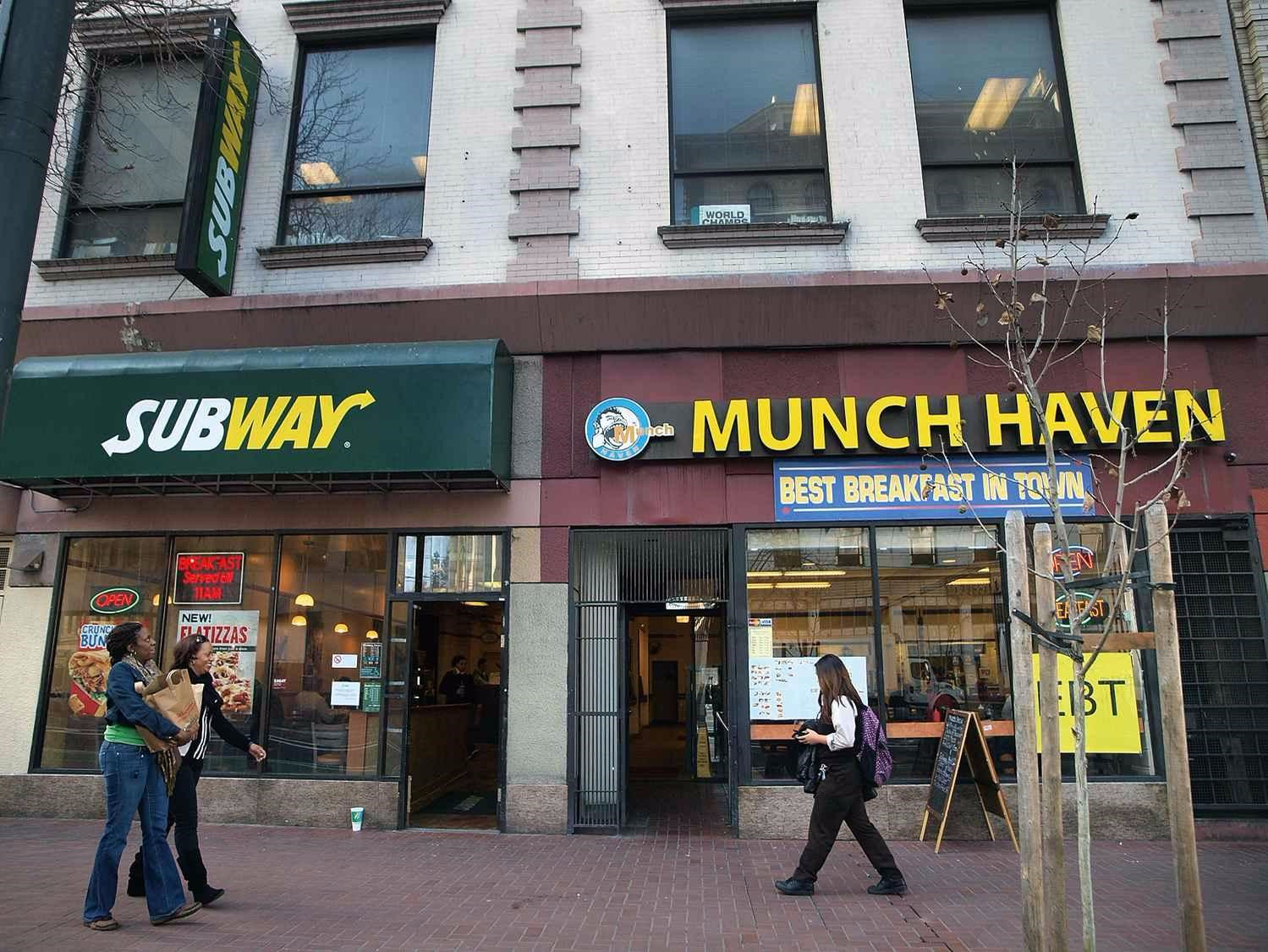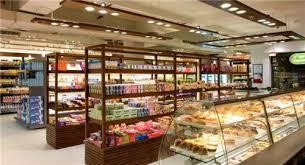Meaning of Retail Trade
Define Retail Trade
Retail trade is the sale of goods in small quantities to consumers.
OR
is a business activity involving buying goods and retailing them to ultimate consumers without changing the physical and chemical form of goods.
Retailer:
One who sells goods or commodities directly to consumers. These items are purchased from the manufacturer or wholesaler and sold to the end user at a marked up price. Examples: retailer would be the small family-operated pharmacy on the corner etc.
Difference between Retailing and the Retailer
Distinguish between retailing and the Retailer
RETAILER AND RETAILING.
Retailer
is a trader who goods and service to end users. Retailing is the
strategies adopted by retailers. in most cases both are same meaning He
has a limited sphere in the market.
is a trader who goods and service to end users. Retailing is the
strategies adopted by retailers. in most cases both are same meaning He
has a limited sphere in the market.
The Functions of Retail Trade
Point out the functions of retail Trade
Functions
Retailers perform a number of functions. These are:
- The retailer buys a variety of products from the wholesaler or a number
of wholesalers. He thus performs two functions like buying of goods and
assembling of goods. - The retailer performs storing function by stocking the goods for a consumer.
- He develops personal contact with the consumers and gives them goods on credit.
- He bears the risks in connection with Physical Spoilage of goods and
fall in price. Besides he bears risks on account of fire, theft,
deterioration in the quality and spoilage of goods. - He resorts to standardization and grading of goods in such a way that these are accepted by the customers.
- He makes arrangement for delivery of goods and supply valuable market information to both wholesaler and the consumer.
Service of a Retailer
A retailer provides a number of services to the customer and to the wholesaler.
To Customers:
- He provides ready stock of goods and as such he sells and quantity of goods desired by the customers.
- He keeps a large variety of goods produced by different producers and
thereby ensures a wide variety of choice to the customers. - He
relives the consumers of maintaining large quantity of goods for future
period because he himself holds large stock of goods. - He develops personal relationship with the customers by giving them credit.
- he provides free-home delivery service to the customers.
- He informs the new product to the customers.
- he makes arrangement for replacement of goods when he receive complaints.
To Wholesaler:
- He gives valuable market information with regard to taste, fashion and demand for the goods to the wholesaler.
- The retailer maintains direct contact with the customers and so he
relieves the wholesaler with regard to maintenance of direct contact. - He helps the wholesaler in getting their goods distributed to the consumer.
- He is regarded as an important link between the wholesaler and the consumer.
- He creates demand for the products by displaying the goods to the consumers.
Different Types of Retailers
Identify the different types of retailers
TYPES OF RETAIL TRADE
- Small scale retail trade
- large scale trade
Small – scale retailing
Features of Small – scale retailing <!– [if !supportLineBreakNewLine]–> <!–[endif]–>
- They normally run as a sole proprietorship (sole trader) or a partnership 2.
- The capital is usually small and it is raised from personal saving, borrowed from friends or family or loan from banks 3.
- Small retailers obtain a great variety of goods in small quantities from wholesaler 4.
- The
sole proprietorship (sole trader) normally serves his customers with
the help of some assistants. Therefore, he has the opportunity to get
know his regular customers well
Reasons why Small retailers buy from the Wholesaler <!– [if !supportLineBreakNewLine]–> <!–[endif]–>
- Small Capital;
The small retailer has only a small capital and cannot afford to buy
in bulk from the manufacturer therefore he can only make small orders at
a particular time - Limited market; The small
retailers has mainly a regular customers therefore the markets is only
limited to the people living in the area near their shop - Small turnover;
The total sales per month is small If they buy in bulk, the goods will
be laying around and have to pay the rental for storing the goods
Furthermore they can go bad in the case of foodstuff or may go out of
fashion in the case of goods like clothing and furniture That why they
only needs to pay in small amounts for a great variety of goods produced
by the manufacturers This is exactly what the wholesaler does for them. - Need for credit;
Trade credit is one of the greatest sources of funds for a small
retailer Manufactures are often unwilling to give credit but the
wholesalers are willing to give trade to small retailer in order to
secure business - Variety of goods; A wholesaler
stocks a great variety of brands of a particulars goods like Lux,
Palmolive, Imperial Leather Soap.And they also stocks a wide range of
related goods, for example, foodstuff and household items. Retail
Traders can be classified into two categories viz; the Itinerant
retailers and the Fixed retailers.The Fixed retailers are further
subdivided into (a) Small scale and (b) Large scale fixed shop
retailers.
The classification of retailers is shown in the following chart:

1. Itinerant Retailers:
These
retailers do not have the fixed places to carry their trade and
generally move from one place to another in order to sell goods. They
can be usually seen along the road sides, streets, railway compartments,
bus stands, and fairs etc.
retailers do not have the fixed places to carry their trade and
generally move from one place to another in order to sell goods. They
can be usually seen along the road sides, streets, railway compartments,
bus stands, and fairs etc.
They
usually possess that stock which can be conveniently sold during the
day. They need limited funds to carry their business. These types of
retailers deal in daily need articles like vegetables, fruits, milk,
eggs and fishes etc.
usually possess that stock which can be conveniently sold during the
day. They need limited funds to carry their business. These types of
retailers deal in daily need articles like vegetables, fruits, milk,
eggs and fishes etc.
A brief explanation of this type of retailers is given as under:
- Hawkers and peddlars:These
are the petty retailers who carry their products on their heads or on
wheeled vehicles from door to door. They usually sell seasonal goods
like fruits, vegetables and eatables and also sell certain other goods
like pens, toys and utensils, etc. - Cheap jacks:They
hire shops in different residential localities wherein they display
their products for sale. They do not stick to one place; rather keep
moving from one locality to another. They usually deal in household
articles. - Market traders:They sell their
products at periodical markets on ‘market days’. The markets may be
weekly or fortnightly. They also sell their wares at different fairs and
gatherings. - Street Traders:These traders are
found on the pavements of crowded streets or markets of the cities. They
are also known as “pavement retailers” In big cities like Calcutta,
Delhi, Mumbai and Chennai etc., these traders are usually found selling
their goods in different markets.
2. Fixed Shops:
These shops are of two type’s viz. (A) Small scale and (B) Large scale.
(a)Small Scale:
There are different types of small retailers which are explained as under:
- Street stalls holders:These
retailers carry their business on a very small scale basis in busy and
crowded streets by erecting permanent shops. They purchase goods in
large quantities from the wholesalers and local suppliers for reselling
to the ultimate consumers.usually deal in household articles and
products of daily need. These stall holders are usually sole proprietors
of their shops i.e. carrying every activity right from buying till
final disbursement of goods to the consumers. - Second Hand Goods Sellers: These
dealers deal in second hand or used articles. They purchase these
articles from public or private auctions and private households. These
articles usually include used garments, furniture, books etc. These
dealers meet the needs of the poor people who cannot afford new
articles. - General Shops:They deal in different
variety of goods and are known as general merchants. The goods are meant
for daily use or household purposes. They carry their business in
permanent shops. They manage the shops themselves and are most often
assisted by sales assistants.Usually goods are sold on credit by these
merchants to their permanent customers. They also provide free home
delivery service and facility of exchange of rejected goods to the
customers. - Speciality Shops: These retailers
deal in one particular line of goods e.g. books, utensils, shoes and
medicines etc. These shops can be operated on small scale basis and
managed by the owners themselves assisted by salesmen.The most important
advantage which can be derived from these shops is that the owners
possess the specialised knowledge about the product which is very
helpful in satisfying the customers.
(B) Large Scale Retailers:
The
second type of retailers under fixed shops is large scale retailers.
The large scale production and rapid urbanisation are responsible for
the establishment of large scale retailing organisations.
second type of retailers under fixed shops is large scale retailers.
The large scale production and rapid urbanisation are responsible for
the establishment of large scale retailing organisations.
Features <!– [if !supportLineBreakNewLine]–> <!–[endif]–>
- Normally run as a public limited company
- Capital needed is very large
- Large
Assets where it easier to raise money from the bank or public limited
company can borrow from the public in the form of debentures - Normally buys in bulk direct from the manufacturers
- Sometimes may even have their own factories
- Stores in bulk doing away with the services from the wholesaler <!– [if !supportLineBreakNewLine]–> <!–[endif]–>
Reasons why large retailers buy direct from Manufacturers <!– [if !supportLineBreakNewLine]–> <!–[endif]–>
- Sufficient capital
Manufactures who only sell in bulk normally do not entertain small
order therefore large retailers must have large capital to enable them
to buy in bulk. - Better trade discount Buying
from manufacturers means that the large retailers can get better trade
discount, hence, they pay a lower price for their goods. - Cash payment
since large retailers have sufficient capital, they can afford to pay
in cash. This means they can get even better terms than someone buying
on credit. - Enough resources to carry out functions normally undertaken by wholesalers;
Large retailers normally have their own fleets of transport vehicles to
sent goods to their various branches whenever the need arises Large
retailers can afford to employ expert specialist buyer who know from
experience exactly what goods customers want and who have the knowledge
to buy on the best terms, locally or overseas Large retailers have their
own warehouses and specialist staff to manage storing, bulk breaking,
branding, stock keeping and so on to ensure that goods are not stored
for an excessively long period until they are spoilt or out-of-date and
that goods are not in shortage either. - Larger turnover;
The volume of turnover each month is so large that the large retailer
can afford to buy in bulk It is no use buying in bulk (and hence,
enjoying lower prices) if the goods are not sold quickly
enough.<!–[endif]–>
Types of Large – scale retailers
A
multiple shop system consists of a number of branch shops owned by a
single business firm. This is an attempt on the part of the
manufacturers or the wholesalers to establish a direct link with the
consumers by avoiding middlemen. Some of the definitions of multiple
shops are given as under:
multiple shop system consists of a number of branch shops owned by a
single business firm. This is an attempt on the part of the
manufacturers or the wholesalers to establish a direct link with the
consumers by avoiding middlemen. Some of the definitions of multiple
shops are given as under:
“A multiple shop consists of a number of similar shops owned by a single business firm.” James Stephenson
“This
is a system under which there is a large number of retail shops owned
by the same proprietor, which are scattered over the various places of a
particular city or a country and are engaged in the same line of
activity.” Thomas
is a system under which there is a large number of retail shops owned
by the same proprietor, which are scattered over the various places of a
particular city or a country and are engaged in the same line of
activity.” Thomas
“Fundamentally,
a chain store system is a group of retail stores of essentially the
same type. Centrally owned and with some degree of centralized control
of operation.”E.W. Cundiff and R.R. Still
a chain store system is a group of retail stores of essentially the
same type. Centrally owned and with some degree of centralized control
of operation.”E.W. Cundiff and R.R. Still
From
the above definitions, it is clear that multiple shops or chain stores
operate at different localities in the city under the central ownership
and control. The chain store or multiple shop organisations is nothing
but the extension of retail business on large scale basis.
the above definitions, it is clear that multiple shops or chain stores
operate at different localities in the city under the central ownership
and control. The chain store or multiple shop organisations is nothing
but the extension of retail business on large scale basis.
Characteristics of Multiple Shops:
The distinctive features of multiple shops are as under:
- Multiple shops specialize in one or two articles. The articles are sold by ail the similar shops charging uniform price.
- They
operate on “cash and carry” principles and do not allow credit and free
delivery services to customers. The goods are sold on cash basis. - The main objective of the multiple shops is to establish direct contact with the consumers by eliminating middlemen.
- They operate under centralised control and are horizontally integrated.
- The layout of these shops is simple and similar.
- There are centralised purchases for all the shops which are undertaken by the head office.
- The
branches of multiple shops are scattered throughout the city and also
cater to the needs of the customers living at distant places. - The products sold by multiple shops are mainly necessities or semi- necessities and do not require extensive selling efforts.
- The multiple shops lay emphasis on large and quick turnover.

Advantages of the multiple shops <!– [if !supportLineBreakNewLine]–> <!–[endif]–>
- It can afford to sell at very competitive prices due to bulk purchases.
- It employs expert specialists in such matters as buying, publicity, shop layout and window display.
- The identical layout of branch premises, window displayed and shop fronts is to publicize the identity of the whole chain.
- Slow selling lines and surplus stocks in one area can be transferred to more promising areas.
- The
multiple shops spread its risks and are very flexible. Losses sustained
in one branch can be absorbed in the profits made by other branches and
new branches can be opened in areas of developing prosperity to replace
unprofitable outlets. - It economizes on advertising when all branches are included in one advertisement.
Disadvantages of the multiple shops:
- Too much centralized control from headquarters leaves branch managers with little scope for initiative to meet local conditions.
- Lack
of the personal touch between staff and customers does not help in establishing a loyal customers.
The Qualities of a Retailer
Explain the qualities of a retailer
Characteristics
The followings are some of the essential characteristics of a retailer:
- He is regarded as the last link in the chain of distribution.
- He purchases goods in large quantities from the wholesaler and sell in small quantity to the consumer.
- He deals in general products or a variety of merchandise.
- He develops personal contact with the consumer.
- He aims at providing maximum satisfaction to the consumer.
Modern Development in Retail Trade
Discuss the modern development in retail trade
Department Store: A department store is a retail establishment offering a wide range of consumer goods in different product categories known as “departments”.

Main Features:
- It’s a large building divided into sections or departments, each selling one type of goods.
- Each department store is run by a general manager and each section in the department store will be handle by a manager.
- The duties of a manager including buying goods for his department, fixing the prices and employing his/her staff.
- Department
stores sell a wide range of goods for the whole family where each
department specialises in a particular line of goods for example
clothing, foodstuffs, hardware and so on. - Most department stores are found in the centre of a busy shopping area in a big city.
- Department stores can also afford to advertise expensively in order to attract customers.
- Department
stores also provide facilities for the convenience of their customers
like escalators, lifts, car parks, trolleys, etc. - Example of department stores in Brunei are Hua Ho.
Advantages of Department stores
- A department store is large and able to employ (take up) experienced and trained workers to handle the business efficiently.
- A
department store is still able to sell its goods at competitive price
because it buys in bulk at bigger discounts direct from the wholesalers
or producers. - It economizes on advertising when all branches are included in one advertisement.
- Trading
losses in individual departments can be absorbed so long as the store
as a whole continues to make a profit.
Disadvantages of Department stores
- It has a very high overhead expenses e.g. on rent, salary of workers, utilities like water and electricity bills.
- Normally
departmental stores are located in the central part of the city, high
rental adds to overhead cost which can eventually raise price of goods. - There
is the ever – present danger that market conditions in the neighborhood
may worsen or that population shifts may lead to fewer customers.
Mail order is the buying of goods or services by mail delivery. The buyer places an order
for the desired products with the merchant through some remote method
such as through a telephone call or web site. Then, the products are
delivered to the customer. Mail-order business, also
called direct-mail marketing , method of merchandising in which the
seller’s offer is made through mass mailing of a circular or catalog or
through an advertisement placed in a newspaper or magazine and in which
the buyer places an order by mail. Delivery of the goods may be made by
freight, express, or parcel post on a cash-on-delivery basis. Retail
mail-order selling was developed primarily for rural customers, but it
now includes millions of customers in urban areas.
for the desired products with the merchant through some remote method
such as through a telephone call or web site. Then, the products are
delivered to the customer. Mail-order business, also
called direct-mail marketing , method of merchandising in which the
seller’s offer is made through mass mailing of a circular or catalog or
through an advertisement placed in a newspaper or magazine and in which
the buyer places an order by mail. Delivery of the goods may be made by
freight, express, or parcel post on a cash-on-delivery basis. Retail
mail-order selling was developed primarily for rural customers, but it
now includes millions of customers in urban areas.
Super market is a
large retail market that sells food and other household goods and that
is usually operated on a self-service basis. OR is any business or
company offering an unusually wide range of goods or services.
large retail market that sells food and other household goods and that
is usually operated on a self-service basis. OR is any business or
company offering an unusually wide range of goods or services.
Features of supermarket
The main features of supermarket are as follows:
- Goal Oriented –
The driving force behind every Company is increased sales and high
profits. Most Companies draw out expected sales targets for every year.
The duty lies on the sales team to not only meet these targets but go
beyond them. Every sales person must be goal oriented and should work
towards matching these sales figures. - Confident –
A sales person should be confident about the product he is selling as
well as his own ability to successfully close a sale. Especially in the
case of door to door selling, the sales person should be able to
interact well with the prospective buyer, gain their trust, arouse an
interest and eventually convince them to try a new product. Sales
persons should be willing to handle all kinds of tense situations. - Patient & Courteous –
Convincing a prospective customer to buy a product is not an easy task.
Selling is an art and requires patience. A sales person should be able
to guide a customer through the entire process which begins with a
prospective buyer’s indifferent attitude towards a brand and ends with
them placing an order. The sales person should be courteous and pleasant
while taking a buyer through these stages. - Personality-A
good sales person is not afraid to talk to anyone who may have an
interest in what he/she is selling. Listening and controlling the
conversation by asking intelligent, thought provoking, interesting
questions that are open ended and gather information is another key
trait to successful selling. Also, eye contact, standing straight and
smiling are important for an effective impression towards someone who is
spending their hard earned money. There is a misunderstanding that a
good salesperson has ‘the gift of the gab’ where as most trained sales
people will have heard the saying ‘You have one mouth and two ears, use
them in that proportion’. A good sales person is a listener. They ask
plenty of questions, and make notes of the answers. These notes (mental
or written) help them find a suitable product or service for the
potential customer. A successful sale is when the customer agrees with
that solution - Ethic-Many successful salespeople
have a deep understanding of human behaviour and are able to use these
skills to their advantage. They are aware that, although there is a
process for successfully completing a sale, customers fall into a range
of different personality types. For instance, a sales person would have
to deal with a teacher in a totally different manner to how they would
deal with a businessperson. This is because the two sets of people have a
different outlook on life and would therefore have different qualities
which would be important %
Qualities that define an effective sales person;
- Goal Oriented –
The driving force behind every Company is increased sales and high
profits. Most Companies draw out expected sales targets for every year.
The duty lies on the sales team to not only meet these targets but go
beyond them. Every sales person must be goal oriented and should work
towards matching these sales figures. - Confident –
A sales person should be confident about the product he is selling as
well as his own ability to successfully close a sale. Especially in the
case of door to door selling, the sales person should be able to
interact well with the prospective buyer, gain their trust, arouse an
interest and eventually convince them to try a new product. Sales
persons should be willing to handle all kinds of tense situations. - Patient & Courteous –
Convincing a prospective customer to buy a product is not an easy task.
Selling is an art and requires patience. A sales person should be able
to guide a customer through the entire process which begins with a
prospective buyer’s indifferent attitude towards a brand and ends with
them placing an order. The sales person should be courteous and pleasant
while taking a buyer through these stages.
PROBLEMS UNDERMINE DEVELOPMENT OF RETAIL TRADE IN TANZANIA
- Lack of capital
- Lack of business knowledge
- Poor government support
- Cash: Finding it and managing the cash flow. It’s hard to get and there is never enough. If you are a fast growth company you can rapidly outgrow your available sources, if you are an underperforming company you can’t get it. The majority of companies don’t manage it well. Overdrafts, credit cards and leasing/hire purchase are the most commonly used forms of finance. Factoring and invoice discounting, loans from friends and family
and new equity are the least common sources. Commercial loans, grants
and overdraft had become substantially harder to obtain for a
significant minority of businesses. Most
businesses experience some problems getting paid on time by their
customers and with debt recovery. Good credit control helps to prevent
this becoming a serious problem. - Lack of a clear plan:
most businesses don’t know how to plan. Lack of a plan worsens the cash
problem by wasting cash chasing tempting diversions, and throwing money
at problems. Equally important is revising your plan according to
changing economic and business conditions and to ensure your survival in
the recession. - Ineffective leadership: this
issue takes many forms. It is frequently in the form of depth of
leadership. The founder of the company is too much hands-on and a) does
not concentrate enough on his primary role as a leader rather than a
manager; and b) fails to enlist support of competent managers and staff
behind him or her either through recruitment or by outsourcing. This
eventually causes the company to stop growing and eventually could lead
to failure. Directors should always remember their core role and
responsibilities. - Sales/marketing effectiveness:
This leads back to planning and leadership. Many businesses have not
taken the time to decide what their USP is. They try to compete in
conflicting areas, such as lowest price and highest service. One takes
away money and the other ads cost. Part of the planning process for a
new product should include a very clear answer to one simple question,
“with all of the products and service available to my customers why
should they buy from me?”.
QUIZ
- Describe the functions of retail.
- Differentiate between retailing and a retailer.
- Explain the advantages and disadvantages of supermarket.






